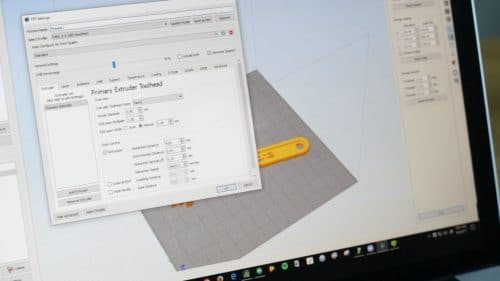Avoiding Common Pitfalls with Simplify3D
Fusion3 bundles Simplify3D with our 3D printers as this slicer software is both easy to use and very powerful for advanced users.
With all the different ways to customize and configure Simplify3D, it is also easy to accidentally cause problems that will negatively impact your print quality.
Here are tips from Fusion3’s support team to avoid common pitfalls:
Optimal Layer Heights:
Your layer height should be between 25% and 75% of your nozzle diameter. So for example, a 0.4mm nozzle can easily print layer heights from 0.05-0.30mm. Layer heights larger than this will result in very weak layer-to-layer bonding. Layer heights smaller than can cause inconsistent results, unless you have your part geometries and print settings perfectly optimized for the part.
Limitations of Lower Layer Heights:
As you use smaller layer heights, you will find that you need to use more infill. For example, don’t try to mix 0.1MM layer height and 10% infill. You may also find that certain geometry just won’t work at 0.1MM or lower LH, but works fine above 0.1MM.
Determining the Right Infill Percentage:
Ensure that your infill settings are between 10% and 90%. Too little infill will result in the roof of your part not having enough support to print correctly. Using 100% infill can result in the part being “overfilled” with the material. This extra material has to go somewhere and the excess will build up until it collides with the print head and causes the print to fail.
Pre-configured Print Quality Settings:
Most of the profiles that Fusion3 creates for the different certified materials have quality presets built in for different layer heights. You might be tempted to run everything on the “fine” setting, but unless your application specifically requires this, you’ll find that the standard preset will deliver a part that looks nearly as nice, takes half the time, and has a higher probability of successfully printing.
Modifying Fusion3’s Material Profiles:
Our profiles are set up with a known-to-work combination of layer height, temperature, speed, etc. Feel free to experiment with changing settings! But if you encounter odd behavior or unsatisfactory results, the first thing to try is to revert back to the stock settings and try again.
